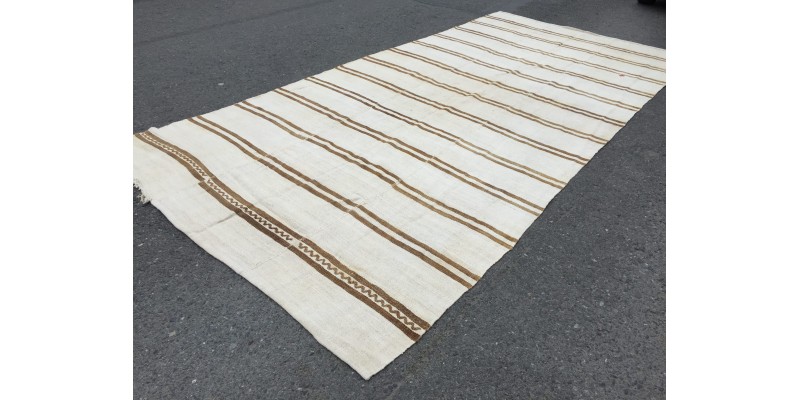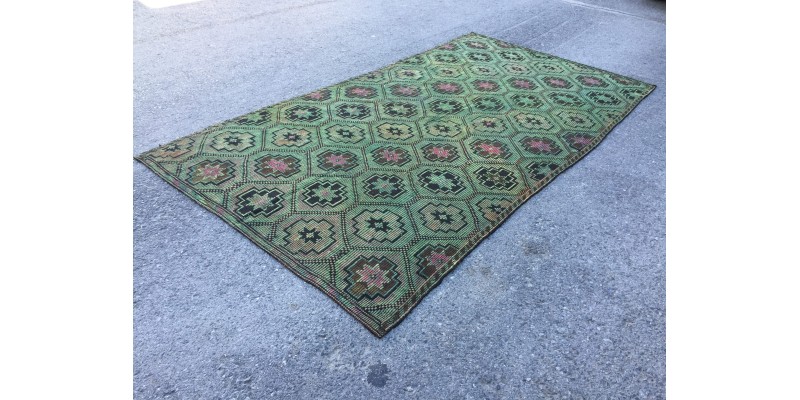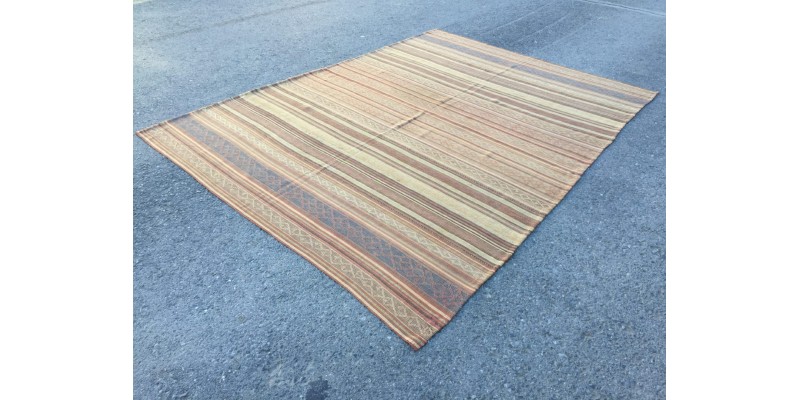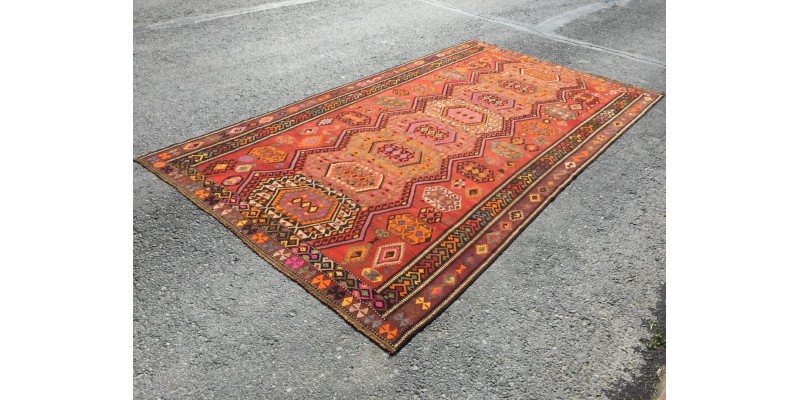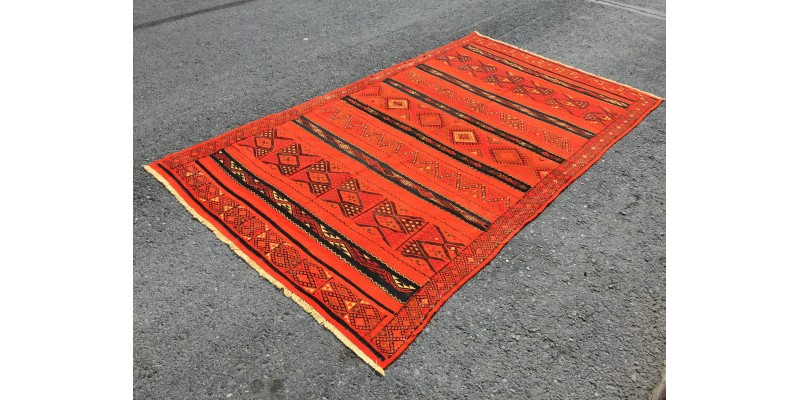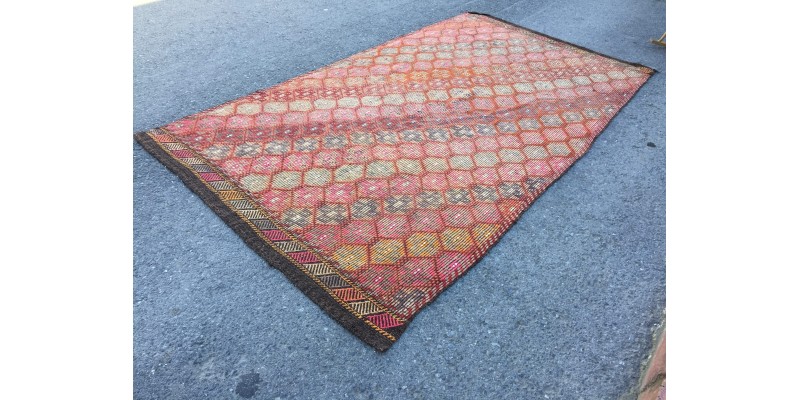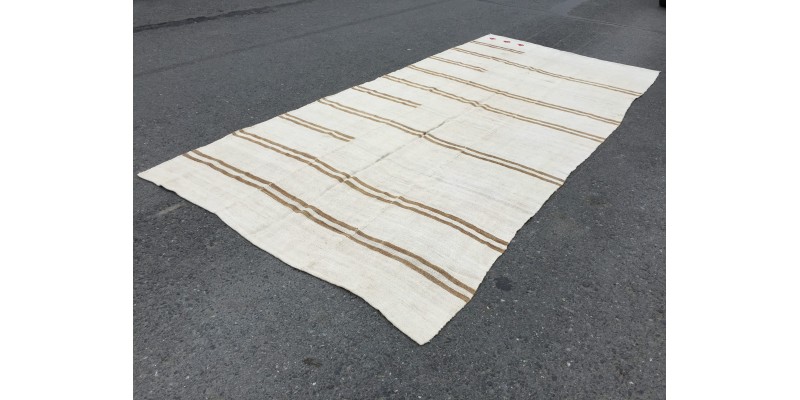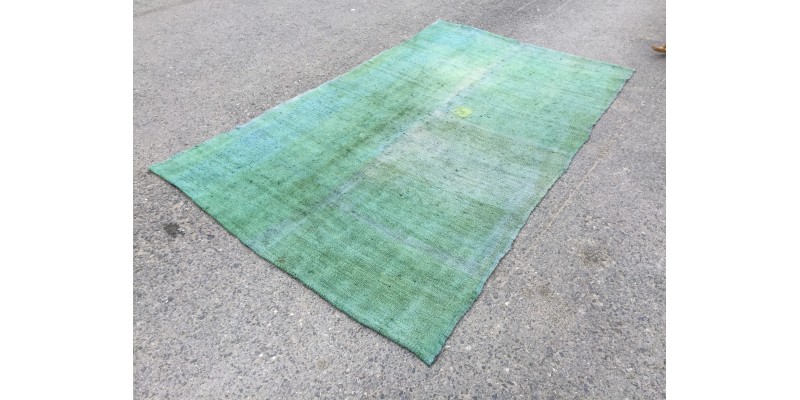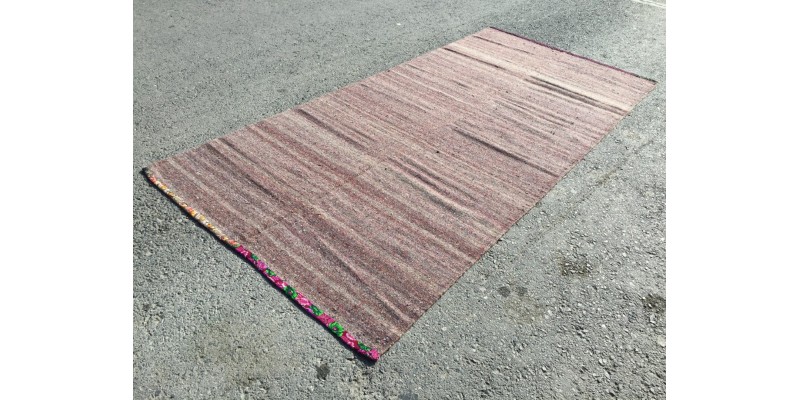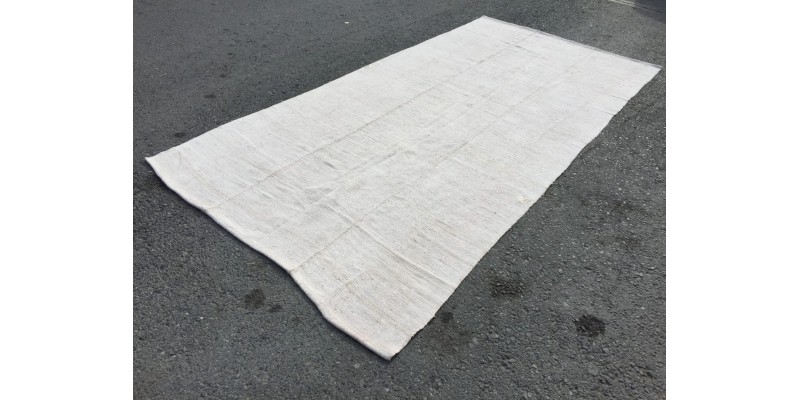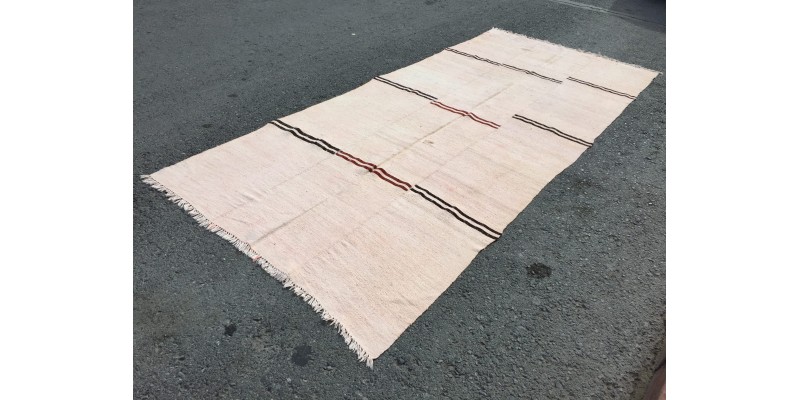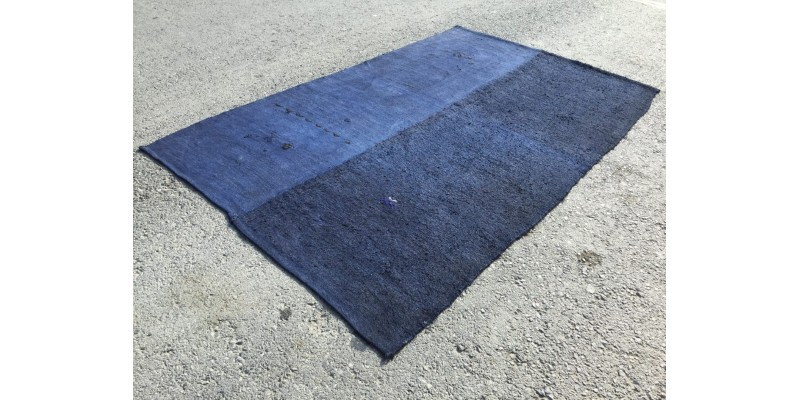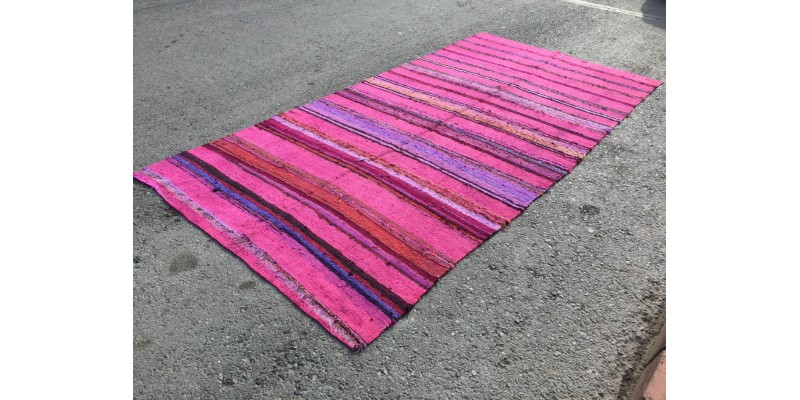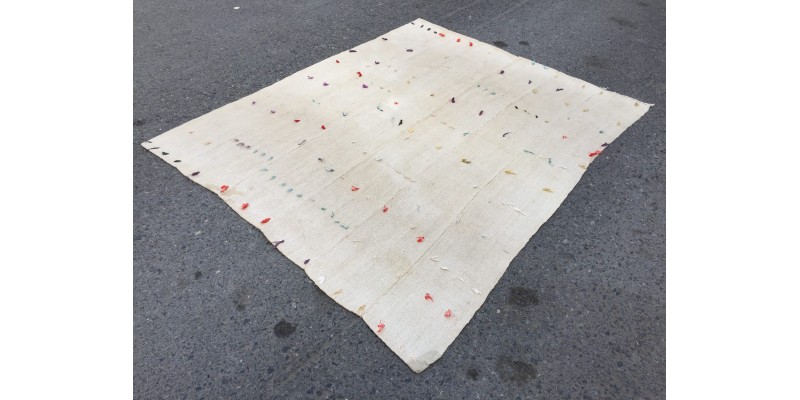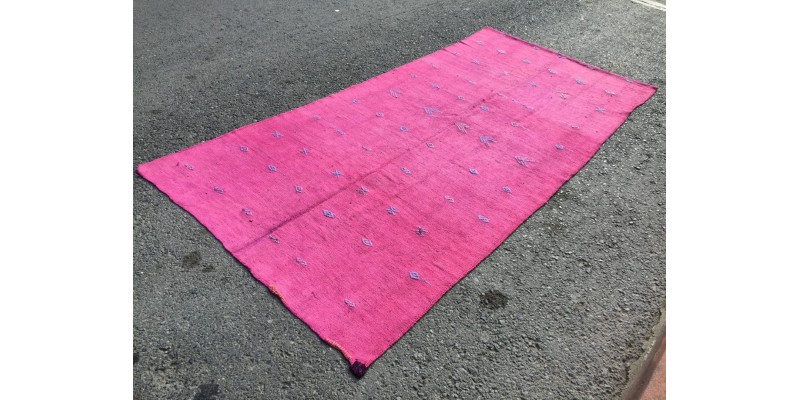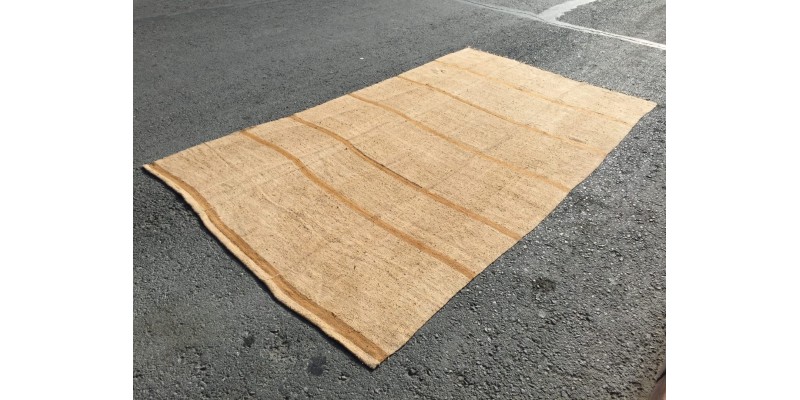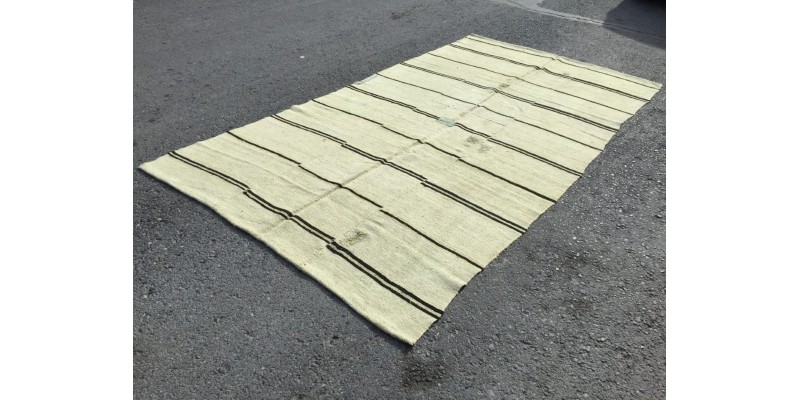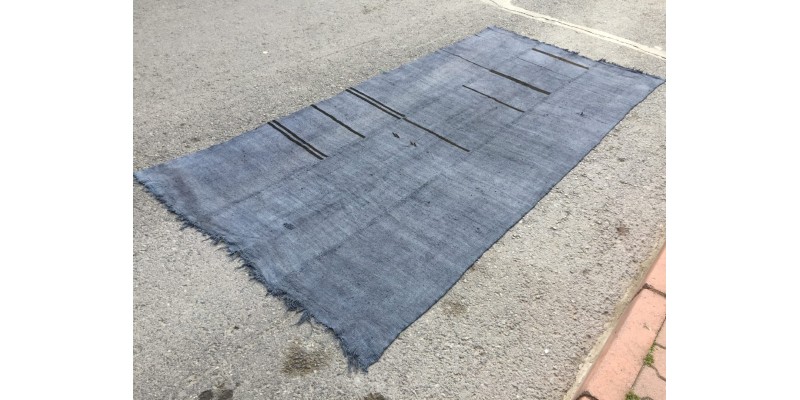Turkish Anatolian Kilim
An Anatolian Kilim, often simply referred to as a Kilim, is a traditional flat-woven textile or rug that originates from the Anatolian region, which is now primarily within the borders of modern-day Turkey. Kilims have a rich history and are known for their unique designs, vibrant colors, and cultural significance. Here's a description of Anatolian Kilims:
1. Weaving Technique: Kilims are woven using a flat-weave technique, which means that the warp and weft threads are tightly interwoven to create a flat, non-pile surface. This weaving method gives Kilims their characteristic thin and lightweight quality.
2. Materials: Traditional Kilims are crafted using natural materials, such as wool, cotton, or a combination of both. Wool is a common choice due to its durability, while cotton is used for its softness.
3. Geometric Patterns: Anatolian Kilims are renowned for their intricate and colorful geometric patterns. These patterns often incorporate symbols, motifs, and tribal designs that hold cultural and historical significance. Each region and tribe may have its unique designs, making Kilims a rich tapestry of Turkish heritage.
4. Color Palette: Kilims are known for their vibrant and bold color palettes. Red, blue, green, and yellow are commonly used, and these colors are often obtained from natural dyes.
5. Multiple Uses: Kilims have a wide range of uses in Turkish culture. They can be used as rugs, floor coverings, wall hangings, tablecloths, saddlebags, or even as prayer rugs. Their versatility makes them a functional and decorative item in many households.
6. Cultural Significance: Kilims are not just decorative textiles; they also carry cultural significance. Many Kilims are woven by local artisans who pass down their skills and designs through generations. They often tell stories and represent the history, beliefs, and traditions of the people who make them.
7. Regional Variations: Different regions in Anatolia have their own distinct styles of Kilim weaving. Some well-known types include Bergama, Konya, and Kars Kilims, each with unique designs and color schemes.
8. Collectible Art: Anatolian Kilims are highly sought after by collectors and interior designers for their artistic and historical value. Vintage and antique Kilims are particularly prized for their craftsmanship and authenticity.
9. Contemporary Adaptations: While traditional Kilims remain popular, contemporary designers and weavers have adapted the Kilim style to create modern, eclectic pieces that blend traditional elements with contemporary design.
Anatolian Kilims are not only functional textiles but also a form of art that reflects the culture and history of the Anatolian region. They continue to be cherished for their beauty and craftsmanship, both in Turkey and around the world.

